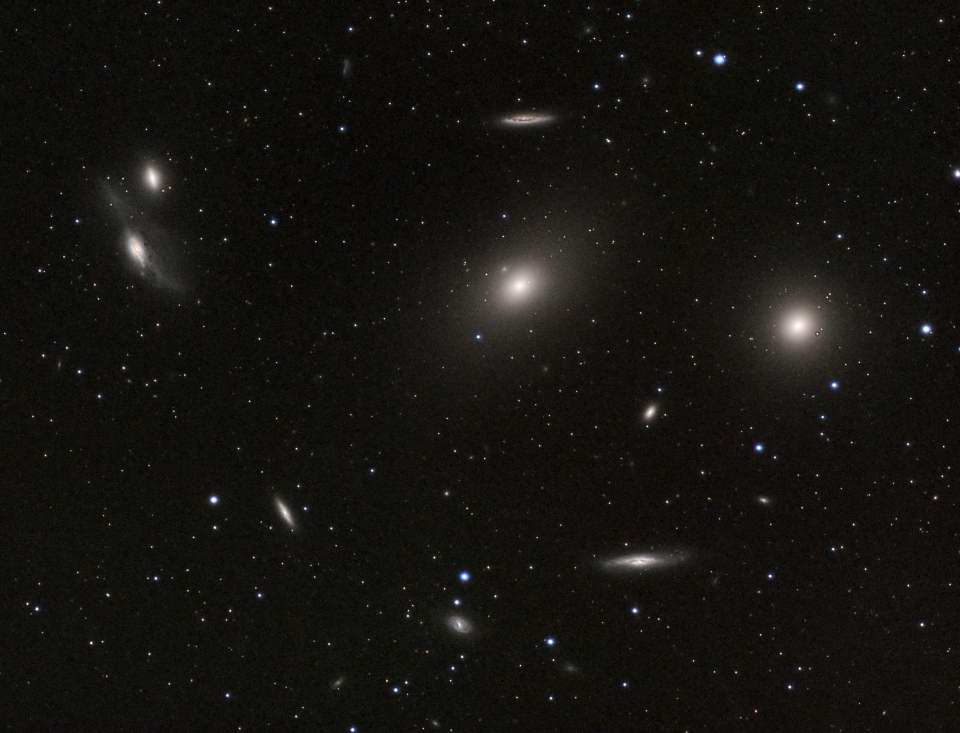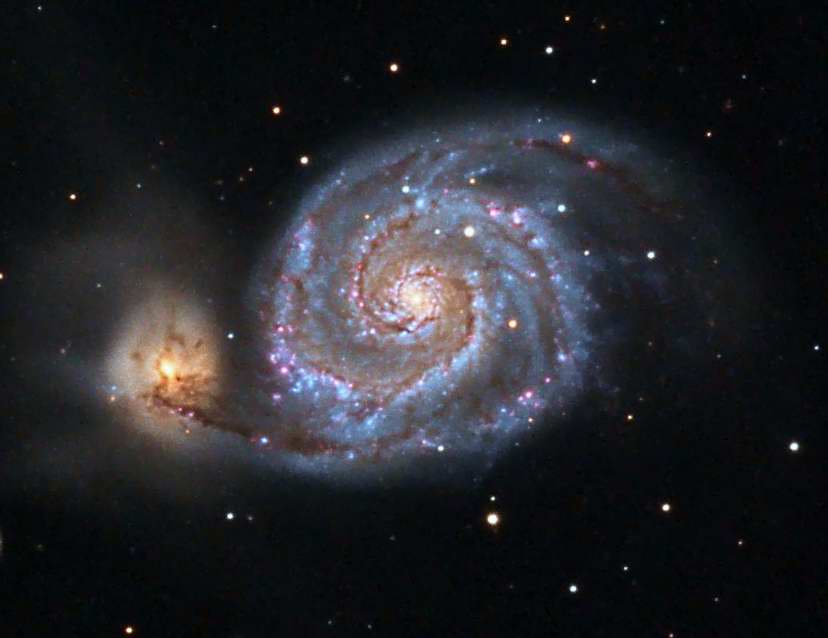Stargazing

|
The Constellation Virgo |

|
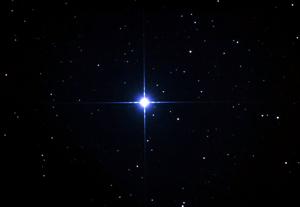 We now continue up to that very bright
star just above Corvus. This is the star Spica -- it is exactly magnitude 1.0,
and it's not really all that close, being 275 light years away. It turns out
this star is more than two thousand times as bright as our sun. See
how blue it is? That is the sign of a bright, fast-burning star.
We now continue up to that very bright
star just above Corvus. This is the star Spica -- it is exactly magnitude 1.0,
and it's not really all that close, being 275 light years away. It turns out
this star is more than two thousand times as bright as our sun. See
how blue it is? That is the sign of a bright, fast-burning star. Even though it's ten times as massive as our sun, Spica will burn itself out in less than 5% of the time our sun will live, because it's burning its fuel up so fast. That means that this star was probably born around the time that dinosaurs appeared on earth, a cosmic blink of the eye ago, and will burn out in about that much time again. Meanwhile our sun, ten times smaller, and born five billion years ago, just keeps on burning. So it goes with stars - the bigger they are, the harder they fall.
- Spica is part of the Zodiac constellation Virgo. {Trace out Virgo}. Virgo
is the second largest constellation anywhere in the sky. In fact we can see
the three largest constellations in the sky right now -- Hydra is the very
largest, Virgo is the second largest, and Ursa Major is the third largest.
Virgo is a faint constellation, and when it's sitting low in the sky it can be
a little hard to see. I see the "Y" as being her arms, although others see
the 'left arm' as being her head & Spica as her left hand holding a grain of
wheat.
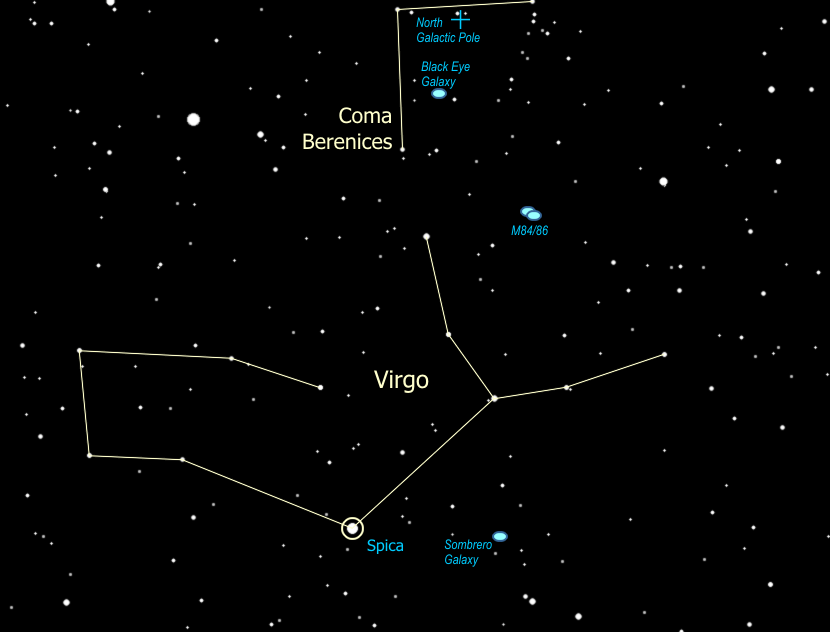
- I prefer to think of her arms outstretched holding the Virgo Cluster --
not a cluster of stars but rather a cluster of galaxies. The galactic pole
of our galaxy is in that general direction (you are looking up out of the disk)
and hence that is the best direction to see out of our galaxy and spot other
galaxies. The Virgo cluster is an actual cluster of galaxies, close to each
other in space. They're about 40 MILLION light years away from us, though, so
we would need a fairly large telescope, 8 inches (diameter) or bigger, to see
any real detail.
We will put the telescope right at the core of this galactic cluster, on M84 and M86, two elliptical galaxies. With a larger scope and a dark sky we will be able to see that there are actually four (or more) other, smaller & fainter, galaxies in the same field of view.
This region of interesting galaxies sweeps all the way up to the Big Dipper, and all the way down to Corvus the Crow. Just below the handle of the Dipper (officially in the faint neighboring constellation of Canes Venateces) is one of the coolest-looking galaxies for us to get our telescope on, The Whirlpool Galaxy.
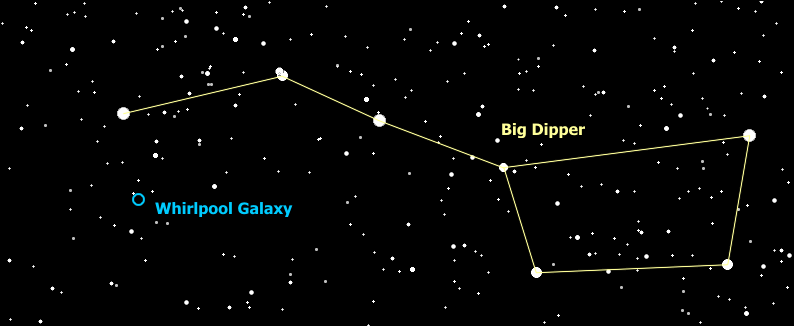
It's actually a pair of galaxies, a big spiral and a small one, connected by one of the spiral arms of the bigger one.
Wow. It will never look this good in our telescope, but just so you know what you're looking at.
 |
 |
 |
| Back to Hydra | Go to Spring Index | On to Bootes |
Questions
Your questions and comments regarding the Stargazing section are welcome.
You can e-mail the author, Randy Culp for inquiries,
suggestions, new ideas or just to chat.
Updated 18 July 2023

